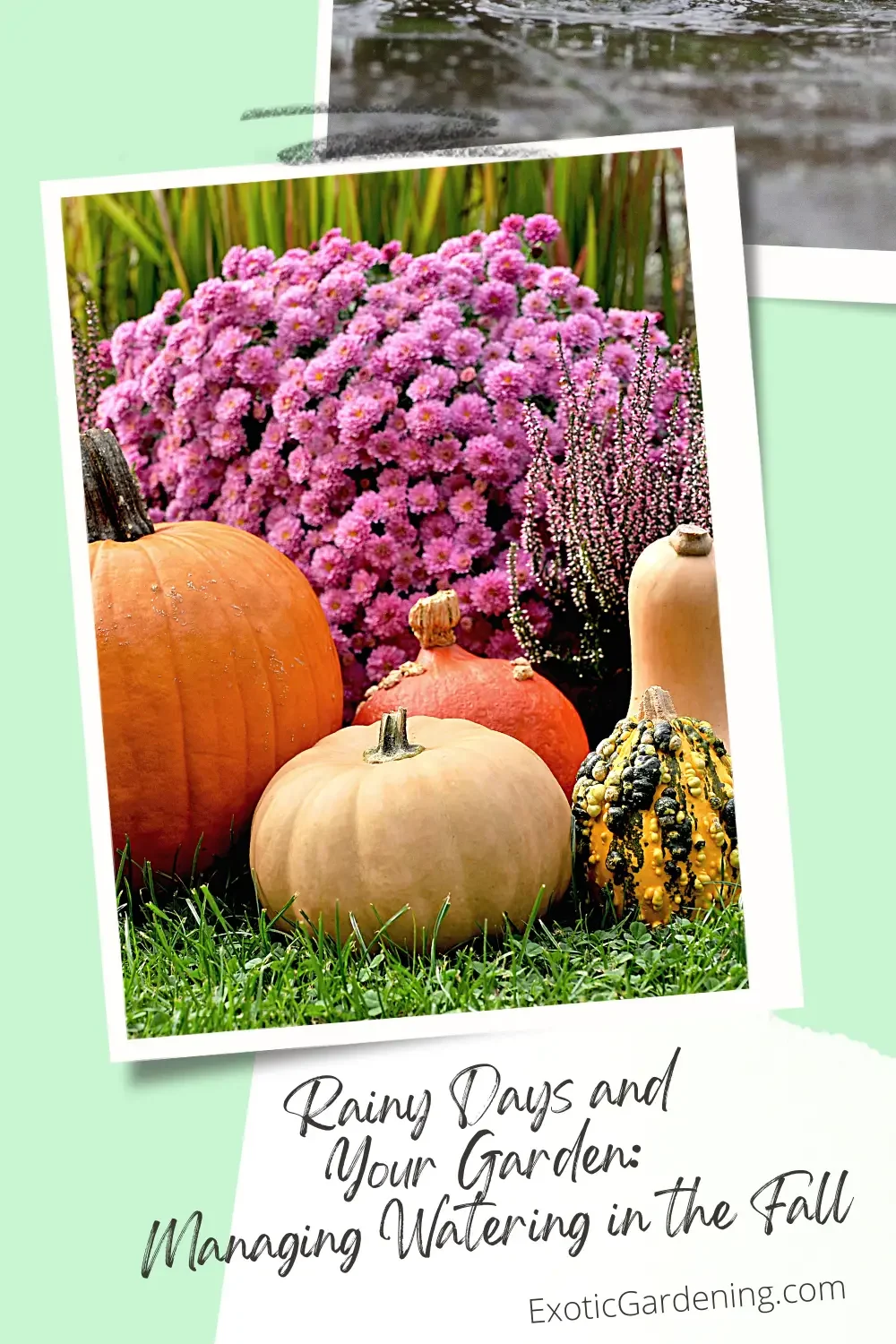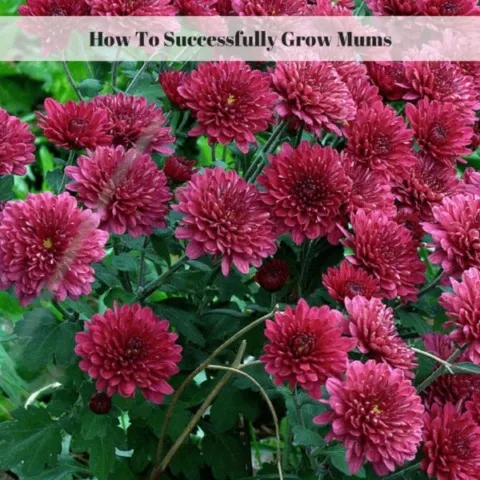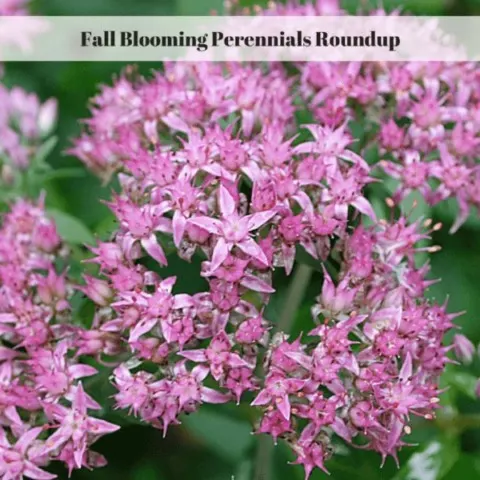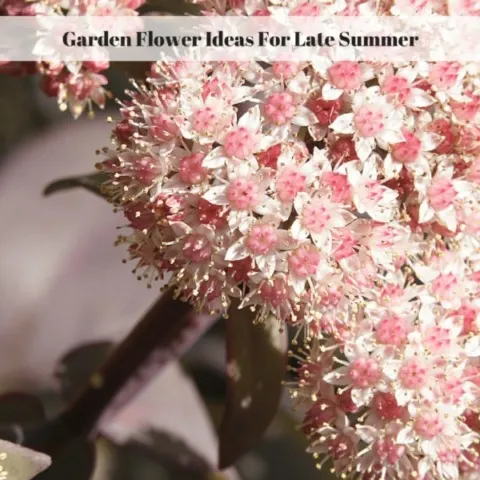Today, I'm excited to dive into a topic that's near and dear to our hearts: managing watering in the fall when those rainy days start to roll in.
It's a topic close to our hearts, and you're probably aware that striking that balance is key.
Autumn rain can be a double-edged sword.
On one hand, it's a delight to see those raindrops nourishing your garden.
But on the other hand, too much of a good thing can be detrimental.
When the skies open up, it's tempting to assume your plants are well-hydrated.
However, excessive rainfall can lead to waterlogged soil, which can stifle root growth and encourage the growth of harmful fungi.
Overwatering can also wash away vital nutrients from the soil, leaving your plants undernourished.
In the following sections, we'll explore the beauty of rainy days in autumn and the unique challenges they present.
We'll also share experiences and tips on how to effectively manage your watering routine during this season, ensuring your fall garden flourishes with just the right amount of water.
So, let's dive in and make sure your garden thrives this fall!
The Delight of Rain in Autumn
First off, let's acknowledge the sheer delight of rainy autumn days.
The earthy scent of rain-soaked soil, the cool breeze, and the way it quenches the thirst of your plants can be nothing short of magical.
But like all good things, it comes with its challenges.
Rain in autumn brings a sense of renewal and rejuvenation to your garden.
After a long, hot summer, the gentle patter of raindrops on leaves and petals is a welcome respite.
The moisture from the rain helps to replenish the soil, providing much-needed hydration to your plants.
It's nature's way of giving your garden a fresh start and preparing it for the colder months ahead.
One of the joys of rainy autumn days is watching your garden come alive with vibrant colors.
The rain brings out the rich hues of the changing leaves, creating a picturesque scene that is a feast for the eyes.
The droplets of water glistening on the petals of flowers add an ethereal beauty to your garden, making it a tranquil and serene space to unwind.
But amidst the delight, it's important to be mindful of the impact excessive rainfall can have on your garden.
While your plants may enjoy a good drink, too much water can lead to waterlogged soil and root rot.
It's crucial to strike a balance between the natural watering provided by the rain and the need for proper drainage to prevent these issues.
To make the most of the rain in autumn, consider implementing some simple strategies.
1. Optimize Drainage
- Improve your garden's drainage by incorporating organic matter into the soil. This not only enhances soil structure but also helps prevent water from pooling around your plants' roots.
- Consider creating slopes or raised beds to further assist with proper drainage. This ensures that excess water drains away, preventing waterlogging.
2. Weather Watch
- Stay tuned to the weather forecast. If heavy rain is in the cards, it's a good idea to temporarily halt your regular watering routine.
- Nature is on your side during rainy periods, so let your garden soak up the free water. Adjust your watering schedule based on the forecast, allowing your plants to benefit from the rain without overwatering them.
These steps will help you navigate the fall's unpredictable weather and ensure your garden receives the perfect amount of water.
The Perils of Overwatering: When Rain Becomes a Problem
Ah, the soothing rhythm of rain on your garden – it can lull you into thinking all is well.
But in the gardening world, too much of a good thing isn't always wonderful.
The Root of the Issue: Root Rot
Picture this: the ground becomes waterlogged, and your plant's roots gasp for oxygen.
It's a nightmare scenario for your beloved garden.
Root rot sets in when the soil remains perpetually wet, depriving roots of oxygen.
As a result, they wither away, and your plants struggle to absorb nutrients and water.
This leads to stunted growth, yellowing leaves, and, eventually, the demise of your green companions.
Fungal Foes: The Consequence of Overwatering
Excess moisture can turn your garden into a fungal haven.
These pesky organisms thrive in damp environments, and overwatering creates the perfect breeding ground.
You might encounter foes like powdery mildew, root rot, and damping-off, which can wilt your plants, cause discoloration, and, worst of all, lead to their untimely demise.
How to Tackle These Issues
So, what's the solution to these problems?
Here's a friendly guide:
- Keep a Close Eye on Moisture Levels: Before you reach for that watering can, stick your finger into the soil. If it's still moist, hold off until it dries out. This simple test can save your plants from overhydration.
- Ensure Proper Drainage: Boost your garden's drainage by incorporating organic matter into the soil. This not only enhances soil structure but also ensures water doesn't linger around your plant's roots. Consider raised beds or containers to elevate your plants and prevent water accumulation.
- Water Deeply but Less Frequently: Encourage your roots to grow deeper and be more resilient to drought and root rot by watering deeply but less often.
- Embrace Morning Watering: Water your plants in the morning, giving them ample time to dry out during the day. This strategy reduces the risk of fungal diseases by preventing damp foliage overnight.
- The Power of Mulch: Mulch is a garden superhero. It retains moisture, reduces evaporation, and keeps your soil moist. It also helps in the battle against weeds, which can compete with your plants for water and nutrients.
Managing Watering in the Fall: A Step-By-Step Guide
When it comes to the rainy fall season, adaptability is your best friend.
Your garden's needs will ebb and flow with the rainfall. Here's a practical roadmap:
- Monitor the Rainfall: Keep an eye on the weather forecast, and if rain is expected, give your watering can a break. Mother Nature will handle it for you.
- Check the Soil: After a downpour, stick your finger about an inch or two deep into the soil. If it's still moist, your plants are content, so hold off on watering until it's dry.
- Opt for Morning Watering: If your garden thirsts for more, aim for morning watering. This lets your plants dry out during the day, reducing the risk of fungal issues.
- The Magic of Mulch: A layer of mulch around your plants is like a moisture-regulating shield. It keeps the soil moist for longer and fights off the impact of heavy rains.
- Choose Wisely: Consider the types of plants in your garden. Some are more resilient to rain than others. Succulents, for instance, can weather dry spells and don't mind a bit of neglect in the watering department.
- Soil Matters: If your garden is prone to waterlogging, amend the soil with organic matter like compost or well-rotted manure. This improves drainage and safeguards against root rot.
- Rise Above with Raised Beds and Containers: Elevating your beds or using containers ensures water doesn't linger around your plant's roots. This is particularly valuable if you have heavy clay soil or a garden prone to waterlogging.
By adapting to your garden's changing needs and following these friendly guidelines, you'll master the art of managing watering in the rainy fall season.
Remember, it's all about observing and adjusting to keep your garden thriving, even during the wetter months.
Navigating Fall Watering: Tips and Insights
Each garden has its unique personality, and what thrives in one may not in another.
This is why it's so crucial to share our insights and learn from one another.
By diligently noting weather conditions, watering schedules, and plant health observations, you can uncover valuable patterns and make adjustments when necessary.
Remember, gardening is an ongoing learning process.
What succeeds in one season may require adjustments in the next.
Weather patterns change, and plant needs evolve.
With some vigilance and adaptability, we can effectively manage our watering routines, ensuring a thriving garden throughout the fall season.
It's all about finding that balance between nature and nurture.
The Wisdom of a Gardening Journal
One valuable tip that many gardeners have found helpful is keeping a gardening journal.
By recording weather conditions, watering schedules, and plant health observations, we can identify patterns and make adjustments accordingly.
This practice becomes especially important during the fall when rainfall can be unpredictable.
Listen to Your Plants
Another useful tip is to pay attention to the signs our plants give us.
Wilting leaves, yellowing foliage, or stunted growth can all be indicators of overwatering or underwatering.
By closely monitoring our plants and making adjustments as needed, we can ensure they receive the right amount of water.
Rain Barrels: A Natural Resource
Additionally, some gardeners have found success in using rain barrels to collect and store rainwater.
This not only helps conserve water but also provides a free and natural source of irrigation during dry spells.
If you live in an area with frequent rainfall, this can be a great way to supplement your watering routine.
Cultivating Collective Wisdom: Growing Together as Gardeners
From my own journey, I've discovered that closely observing my garden is like a rhythmic dance with the weather.
We must learn to lead or follow, depending on Mother Nature's rhythm.
And I'm eager to hear about your experiences too.
Have you ever grappled with the challenge of overwatering in the fall?
How did you adapt your watering routine?
When it comes to managing fall watering, there's an abundance of wisdom and tips we can exchange as fellow gardeners.
Gardening is a continuous learning process, and what works for one season may not work for the next.
That's why it's important to share our experiences and tips with each other.
By doing so, we can all benefit from a collective wisdom that helps us become better gardeners.
As we move deeper into the fall season, let's celebrate the joys of gardening in all its challenges and triumphs.
By managing our watering routines effectively and finding that balance between nature and nurture, we can create thriving gardens that bring us joy and beauty year after year.
I hope you found these tips helpful.
The Fall Garden
Fall Pruning Secrets: Trimming for Healthier Plants
Discover Fall Pruning Secrets: Learn when and how to prune for healthier plants in our expert guide. Your garden will thank you!
The Art of Mulching: Protecting Your Plants from Autumn Chill
Discover the secrets of expert mulching in fall. Learn how to protect your plants from the autumn chill with our essential mulching guide.
Crafting Miniature Gardens for Halloween - A Vintage Halloween Tale
Craft Vintage-Inspired Miniature Gardens for Halloween - Spooky Terrariums with Plants and Halloween Decor.
Halloween Horticulture: Plants with Magical Properties for Halloween
Unlock the enchanting world of Halloween with plants with magical properties. Discover their mystical allure in our captivating guide.
Growing Exotic Pumpkin Varieties for a Magical Fall Garden
Discover the allure of exotic pumpkin varieties in your garden for a magical fall. Spice up your harvest with diversity!
Creating a Spooky Halloween Garden: Unveiling Nature's Eerie Allies
Transform your garden into a spooky Halloween haven with eerie insects, enchanting decor, and the magic of nature. Explore now!
Monkshood Flowers for the Fall: A Majestic and Toxic Beauty
There are some late blooming flowers for the fall season such as monkshood. Autumn monkshood is known to bloom from September to November!
Sweet Autumn Clematis: A Garden Treasure
Discover the enchantment of Sweet Autumn Clematis: rapid growth, fragrant blooms, and versatile garden beauty await!
3 Quick Fall Garden Tasks To Do Now
Master your garden's fall cleanup with these 3 essential fall garden tasks. Save time and stress less this season!

























